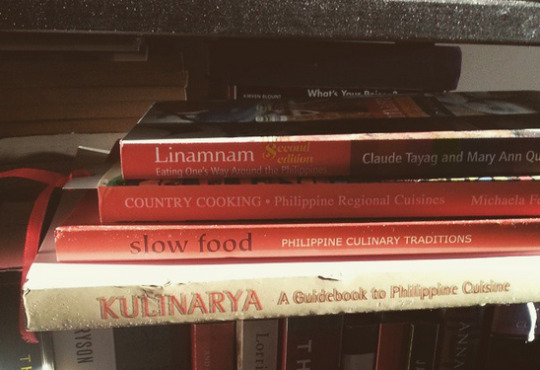Filipino Country Cooking
Filipinos are nothing short of astounding at utilizing local resources to meet their daily needs. Shelter, clothing and food translate to nipa hut (palm tree) houses built with lumber from fallen trees, garments woven with textiles produced by local craftsmen, breakfast, lunch and dinner prepared using ingredients local to each community. It's an idyllic, ideal description of what life in the Philippine countryside portrays, reported through essays in newspapers and magazines, and told through stories from people who recall what their hometown, or their parents' hometown, was like.
I think about why these stories have taken such a hold on me, someone who spent the first 19 years of her life living in the cloisters of Manila. I think about why, amongst everyone I grew up with as a middle-class kid who dreamt like many others of travelling, I envied people from Europe and North America for having a passport that could take them anywhere they wished. I imagined whisking off to ancient walled cities with towering Grecian architecture and sitting in a piazza in northern Italy, sipping a robust espresso, pages open to a favourite book.
I never really dreamed about visiting other places in the Philippines, my home country - and I feel strongly about wanting to change that. I long to travel the Philippine islands and share my enthusiasm with what I learn about - products and foods I come across that reflect an intense understanding of regionalism, and with the people and communities I look forward to meeting, more than anything.
Last week, my shipment of books from Anvil Publishing arrived (they are fantastic with international orders!). I was ecstatic at finally getting my hands on a book called "Country Cooking: Philippine Regional Cuisines" by Michaela Fenix, noted food writer and journalist. The book is a collection of essays from her weekly column with the Philippine Daily Inquirer.

In the span of 62 pages, I have travelled to Aklan, Angono, Baler, Bataan, Batanes, Batangas, Bicol, Binondo, Bohol, Bulacan, Cagayan de Oro and Cagayan Valley - learning about the culinary specialities of each region, a little bit about the history of each town, living through Fenix's words to plop myself right in the middle of a lechon-fueled fiesta, or by the sea netting crabs with rich talangka (crab fat) that melds beautifully with coconut cream - think of deep, intensely orange roe melting right into a milky white sauce spiked with chilies and shallots, redolent of floral notes from the coconut's first press.
It makes me shiver just thinking about it. Somehow, these foods will make their way from a printed page into my mouth, and back out onto a screen to convince at least five other people that embracing your Filipino-ness a little more can start with appreciating the diversity of regional Philippine cuisine.
